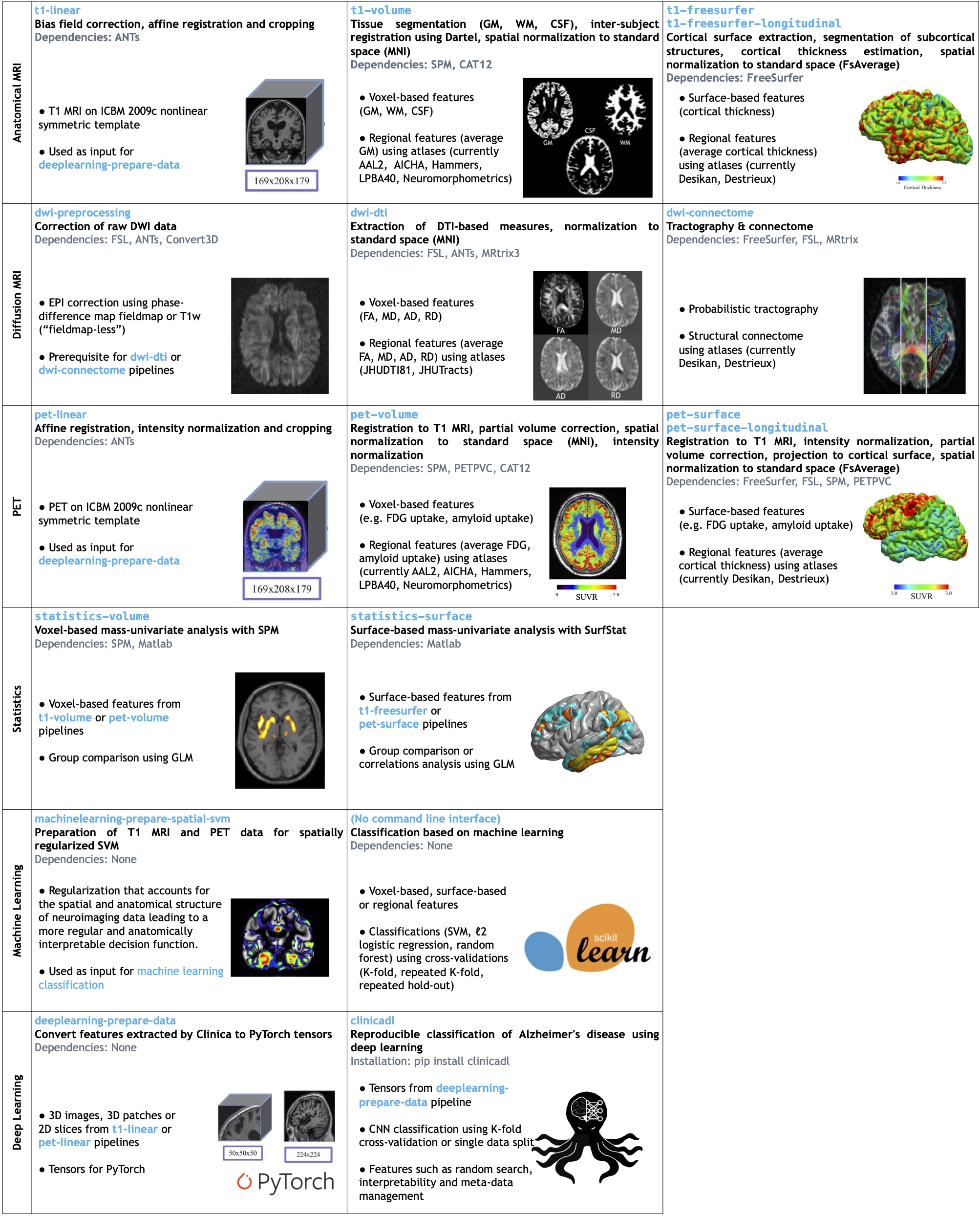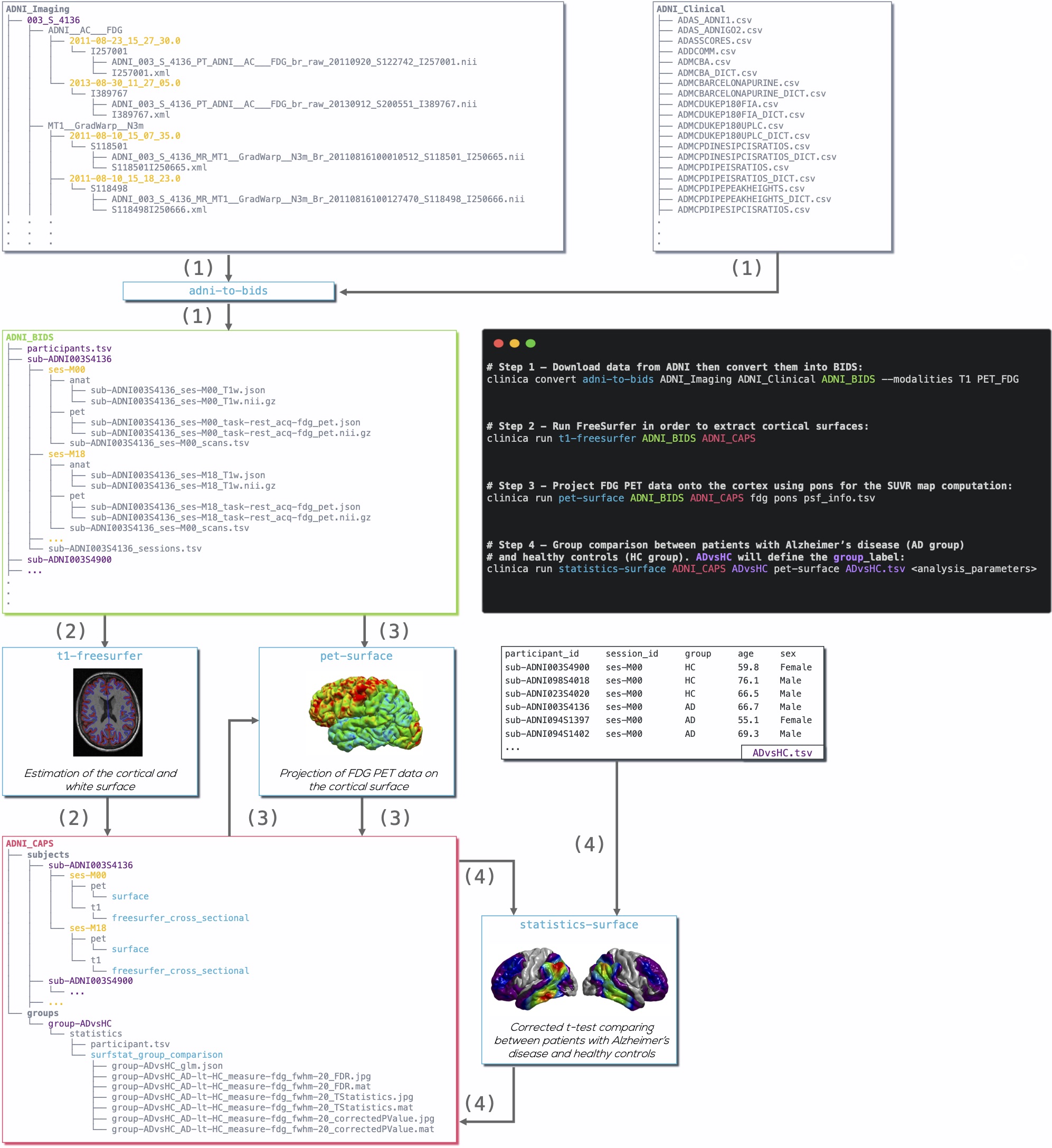Clinica
Clinica is a software platform for clinical research studies involving patients with neurological and psychiatric diseases and the acquisition of multimodal data (neuroimaging, clinical and cognitive evaluations, genetics...), most often with longitudinal follow-up.
Clinica is command-line driven and written in Python. It uses the Nipype system for pipelining and combines widely-used software packages for neuroimaging data analysis (ANTs, FreeSurfer, FSL, MRtrix, PETPVC, SPM), machine learning (Scikit-learn) and the BIDS standard for data organization.
Clinica can process any BIDS-compliant dataset with a set of complex processing pipelines involving different software packages for the analysis of neuroimaging data (T1-weighted MRI, diffusion MRI and PET data). It also provides integration between feature extraction and statistics, machine learning or deep learning.

Clinica is also showcased as a framework for the reproducible classification of Alzheimer's disease using machine learning and deep learning.
Getting Started
Full instructions for installation and additional information can be found in the user documentation.
Clinica currently supports macOS and Linux. It can be installed by typing the following command:
pip install clinica
To avoid conflicts with other versions of the dependency packages installed by pip, it is strongly recommended to create a virtual environment before the installation. For example, use Conda, to create a virtual environment and activate it before installing clinica (you can also use virtualenv):
conda create --name clinicaEnv python=3.7
conda activate clinicaEnv
Depending on the pipeline that you want to use, you need to install pipeline-specific interfaces. Not all the dependencies are necessary to run Clinica. Please refer to this page to determine which third-party libraries you need to install.
Example
Diagram illustrating the Clinica pipelines involved when performing a group comparison of FDG PET data projected on the cortical surface between patients with Alzheimer's disease and healthy controls from the ADNI database:

- Clinical and neuroimaging data are downloaded from the ADNI website and data are converted into BIDS with the
adni-to-bidsconverter. - Estimation of the cortical and white surface is then produced by the
t1-freesurferpipeline. - FDG PET data can be projected on the subject’s cortical surface and normalized to the FsAverage template from FreeSurfer using the
pet-surfacepipeline. - TSV file with demographic information of the population studied is given to the
statistics-surfacepipeline to generate the results of the group comparison.
For more examples and details, please refer to the Documentation.



